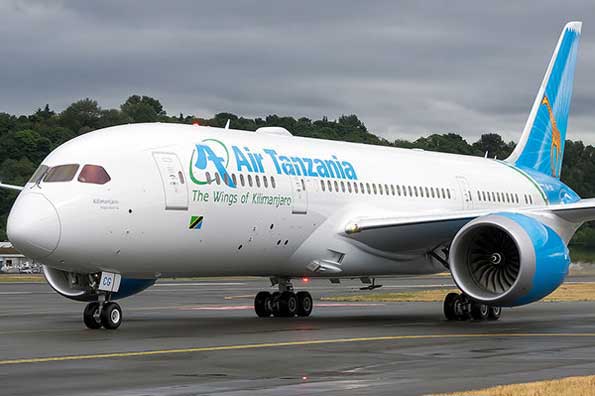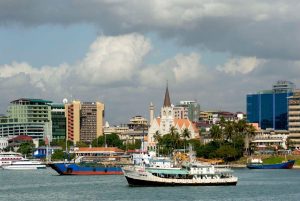Dar es Salaam — Tanzania’s aviation sector can’t find its wings even as the truth is once it takes off only the sky will be the limit. Tanzania’s aviation sector has been tied to the same challenges since the collapse of the East African Community in 1977.
Up till then the sector was under the auspices of the EAC, starting with the East African Common Services organization and then the East African Directorate of Civil Aviation. The three countries–Tanzania, Kenya and Uganda–also formed and jointly ran the East African Airways. The directorate had an oversight role on civil aviation technical activities and air transport economic issues including market access matters, provision of air navigation services. The only responsibilities left to individual states were aerodromes management and maintenance work. But the area control centre for air navigation services and air traffic control for aerodrome control was in Nairobi.
The collapse of the EAC damaged Tanzania’s aviation sector. The government had to start from zero in everything except the airports and aerodromes. To get the feel of this one has to understand that Tanzania had to depend on the Nairobi area control centre until 1998 when the government established its own in Dar es Salaam. The problems that still bedevil the sector now include inadequate investment in hard and soft infrastructure, shortage of skilled labour, inefficient regulation as well as unfavourable and rigid policy. Operators are also concerned with multiple, exorbitant fees and charges that make operational costs extremely high.
Domestic aviation holds the key
The aviation sector is sophisticated, capital and technology intensive, characterized by too much competition and slow return on investment. This is why government efforts to improve the infrastructure in the aviation sector are commendable taking into consideration the state of the sector post-1977 and the fact that the state has many priorities and limited financial resources, stakeholders say.
The importance of the sector in bringing into the country the coveted foreign currency and in its potential to transform both tourism and pan-territorial transport, however, makes it worth every dime invested in it, stakeholders add.
To enable the growth of the sector in a manner that can ensure quick benefits to the economy, Tanzania must focus on the domestic aviation industry. While investing in the international air transport is necessary to provide travellers direct access to the country, still Tanzania, like the US, is lucky in that it doesn’t have to depend on the international routes to reap the full benefit of air transport. Domestic aviation is already dynamic.
As Tanzania embarks on the journey towards the next 60 years the government must put forward both long term and short-term strategies to develop the local aviation market.
The government is clear on what is to be done in the long term, which includes construction of new airports in strategic locations, expanding and deepening aviation training centres and attracting as many operators as possible in the domestic market to increase efficiency and slash airfares.
It is in the short-term strategies where the government seems hesitant to take bold and immediate steps due unknown reasons. Stakeholders say that taking immediate actions to rescue the domestic aviation industry is important to save it from total collapse due to the impact of the Covid-19 pandemic, stakeholders say. Foreign tourists depend on domestic airlines to move around the various destinations. Saving the domestic market from collapsing is tantamount to saving the tourism industry that is trying to shake off the effects of the Corona virus-induced slowdown in air travel.
Tanzania Air Operators’ Association (Taoa) executive secretary Lathifa Sykes says what the industry needs is short term low interest loans to assist companies to bring up their operation capacity back to preCovid-19 period as well as waiver of not only fines and penalties by the Tanzania Revenue Authority.
“Banks should also waive interest rates accumulated during the pandemic when members couldn’t service their loans,” Ms Sykes says.
Swissport CEO Mrisho Yassin says the government should foster the country economic growth in order to increase number of Tanzanians using air transport; investing in airport infrastructure; invest in technology to lower operating costs such as in self-checking systems and self-boarding; enhance regulatory framework; invest in training of pilots and aircraft engineers; and making flying cheaper to accelerate mass flying. “If we do all this, the potential of the domestic aviation market is so huge,” he says.
Taoa further says that the government needs to relook into the multiple fees that hinder the growth of the sector. Some of these fees include the radio frequency licenses ($75 per frequency for Aviation and $500 per frequency for aircraft operators). “These rates are uncompetitive with the rest of the region and duplicative in nature. Thus, the reform proposed was that the radio fee be amended to mirror the regional average while also recommending that the aviation fees be reformed into an annual registration fee for aircrafts,” Ms Sykes says.
The taxes are also prohibitive, especially the direct taxes. They include: withholding tax (at 10%) on non-resident aircraft rentals; withholding tax (at 10%) on non-resident loan repayments. indirect taxes include value added tax of 18 per cent on aircraft sale, value added tax of 18 per cent on aircraft maintenance, value added tax of 18 per cent on sale of aircraft parts among local firms, payroll taxes, skills development levy of 4 per cent.
“The main concern surrounding the incidence of taxation is that it is primarily centered on the usage of aircrafts. This strikes at the heart of many of the core operations of actors in the aviation industry and adds an extremely high-cost burden to an already costly industry,” she says.
Source: The Citizen






